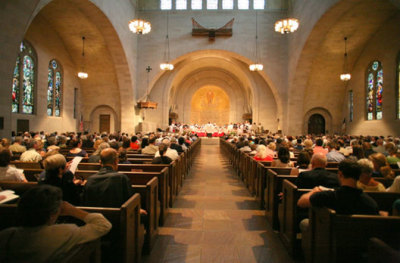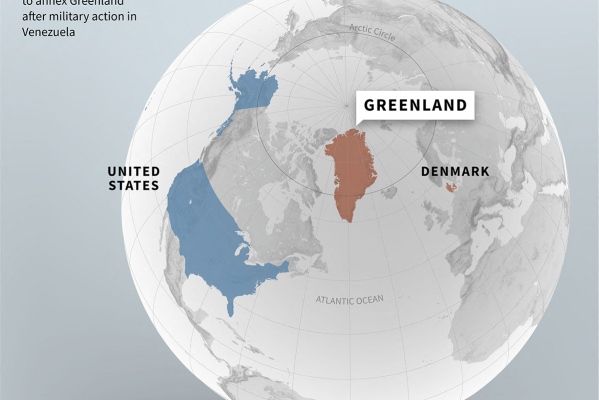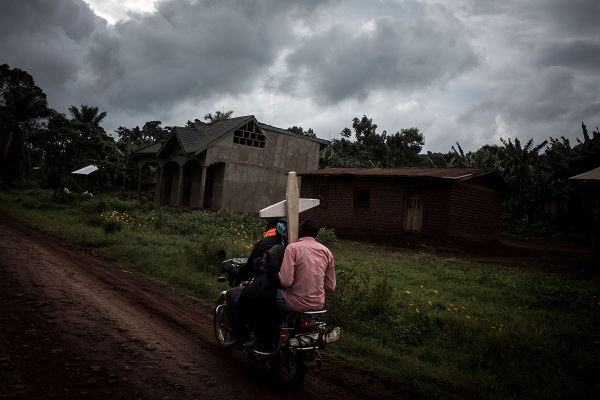Don’t celebrate the decline of mainline churches

The Presbyterian Church (USA)’s latest membership drop to under 1.2 million, compared to over 4 million 60 years ago, making it now smaller than the Episcopal Church, is no reason for conservatives to chortle. Yes, liberal Mainline Protestantism is imploding. Yes, its revisionist theology and left-wing politics are blameworthy. But its decline hurts America.
And Evangelicals, plagued with their own problems and demographic challenges, have little room to judge. Mainline Protestantism helped create and sustain America across much of four centuries. Contemporary evangelicalism is mostly a post-WWII phenomenon, many of whose leading congregations are only several decades old. Will it endure as long as Mainline Protestantism?
The query echoes the counterintuitive question about the Roman Empire; Ask not why it fell but how did it last so long and accomplish so much?
Mainline Protestantism began at Jamestown in 1607 where the colonists built the first Anglican church in what would eventually become the United States, foreshadowing the Episcopal Church. In 1620 the Pilgrims built what became the first Congregationalist church, foreshadowing the United Church of Christ. Later settlers of the 1600s built Presbyterian and Lutheran churches, later becoming the Presbyterian Church (USA) and the Evangelical Lutheran Church in America. Roger Williams, the founder of Rhode Island, is credited with founding the first northern Baptist church, father of the American Baptist Church. As latecomers, Methodism in America began in the mid-1700s, foreshadowing United Methodism, and the Stone-Campbellites of the late 1700s foreshadowed the Christian Church (Disciples of Christ).
These seven denominations are the “seven sisters” of Mainline Protestantism, founding most of America’s colleges and universities, guiding the Founding Fathers and subsequent generations of leadership, stewarding America’s economic growth, and chaplaining America’s democracy, crafting America’s spiritual self-understanding, creating the tools of social and political reform, and generating the language of civil religion functioning as America’s default unofficial state church.
Mainline Protestantism peaked in membership and social influence in the 1950s and began its seemingly irreversible decline in the 1960s. The two predecessor bodies of the Presbyterian Church (USA) in 1965 had over 4.2 million members when America’s population was 40% less than today. Sixty years ago, the seven sisters had 30 million members or nearly one of every six Americans. Today they have about 13 million members or about 1 of every 25 Americans.
By comparison, the Assemblies of God, a Pentecostal evangelical denomination, had half a million members 60 years ago and today has 3.2 million, larger than all Mainline denominations except for United Methodism. The Southern Baptist Convention had 10 million members 60 years ago, rose to 16 million, and over the last 20 years has decreased to 14 million.
Why has once predominant Mainline Protestantism imploded so fast? Defenders of the Mainline mostly blame uncontrollable sociological and demographic trends amid growing secularization. Conservatives blame the Mainline’s theological liberalism, starting in the seminaries in the early 20th century, deemphasizing the supernatural and evangelism in favor of ethics and social reform. Later in the 20th century, political radicalization estranged Mainline elites from local members.
There’s a caricature by some conservatives that typical Mainline congregations focus on social justice and wokery. In fact, the average local Mainline church remains mostly traditional in worship and includes conservatives and liberals. Mainline pastors, aware of this diversity, are usually careful in the pulpit and avoid controversy. Political activism is usually confined to mostly out of sight national or regional denominational structures. Mainline pulpits rarely include overt heresy, as some conservatives imagine. Instead, they typically focus on generic moral and spiritual themes. But evangelism is rarely a focus. Congregations are typically old and almost entirely white. Perhaps it’s fair to say Mainline churches are often more focused on affirmation instead of transformation much less salvation. Yet the Gospel is still there, however muted, in the hymns, the liturgy, and hopefully even in the sermons.
When Mainline denominations, at least in their national structures, politically radicalized starting in the 1960s they assumed their cultural leadership in America was unassailable. They had been paramount for two or three centuries, after all. And who would replace them? They had not foreseen the rise of evangelicalism, which they had deemed irrelevant as a branch of discredited fundamentalism. Nor did they expect secularization and marginalization for the institutional Church. Thanks to the endowments and accumulated cultural capital of the past, Mainline denominations even after losing 50% or more of their membership (Presbyterians have lost almost two-thirds) still mostly pretend all is well. Mainline Protestants still worship in often beautiful and historic buildings, prominently located in old downtowns, not terribly concerned that sanctuaries with capacity for many hundreds now include just dozens.
Some evangelicals disdain Mainline Protestants but have not fully considered their own plight and future. Non-racially diverse evangelical denominations are not growing. Denominational loyalties for both conservatives and liberals are dramatically receding. Growing churches tend to be nondenominational, their growth led by dynamic founding pastors, whose successors often cannot sustain the growth. Without the ballast of denominational ties, such churches often divide, decline or implode, sometimes stuck with large and expensive properties. Absent the connectional accountability of denominations, nondenominational congregations sometimes are more susceptible to financial or sexual scandals.
Evangelical churches are themselves sometimes politicized, perhaps even more so than liberal Mainline congregations. Evangelical churches tend to be more politically homogenous than Mainline congregations, so pastors can feel freer to be political from the pulpit. The politics of the Religious Right, although more populist and organic than the more elitist and clergy-driven Religious Left predominating in Mainline Protestantism, has sometimes distracted evangelical congregations and disenchanted some congregants. Evangelicalism has successfully built a subculture, but it has not shaped and led American culture like Mainline Protestantism did across several centuries. Maybe as a mostly contemporary movement, it just has not had enough time. Maybe it is too focused on congregational life to build wider multigenerational institutions. Maybe its suspicions of academia, having seen the secularizing of Mainline schools, prevented its building a more robust intellectual life with influence beyond its own subculture.
Mainline Protestantism built a nation and a society that, by many political and economic measures, is the most successful in history. The whole world, to the extent it benefits from America’s political and economic capital, can thank, at least partly, Mainline Protestantism. Its failures and decline over the last half-century don’t negate its unprecedented accomplishments of the previous three centuries.
Mainline denominations like the Presbyterian Church (USA) may no longer exist in 20 years or less. Their remaining beautiful sanctuaries may largely become condominiums, or restaurants, or transfer to new religious entities. But what they achieved across many generations uplifted humanity and will endure eternally. We can learn from their mistakes and their ultimate demise. But we should more importantly also learn from their unparalleled success.
Originally published at Juicy Ecumenism.
Mark Tooley became president of the Institute on Religion and Democracy (IRD) in 2009. He joined IRD in 1994 to found its United Methodist committee (UMAction). He is also editor of IRD’s foreign policy and national security journal, Providence.





















